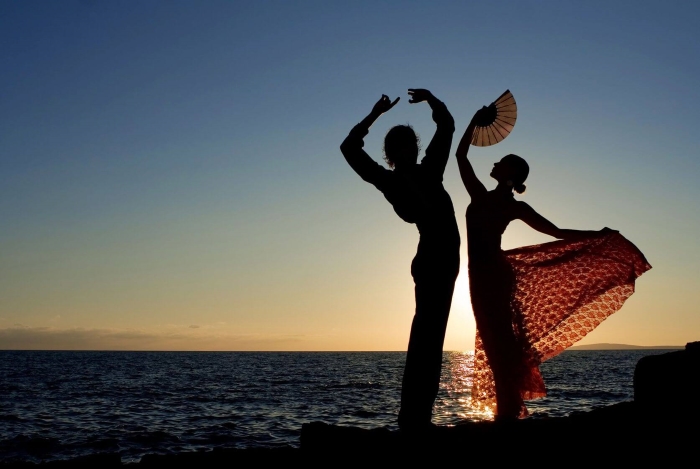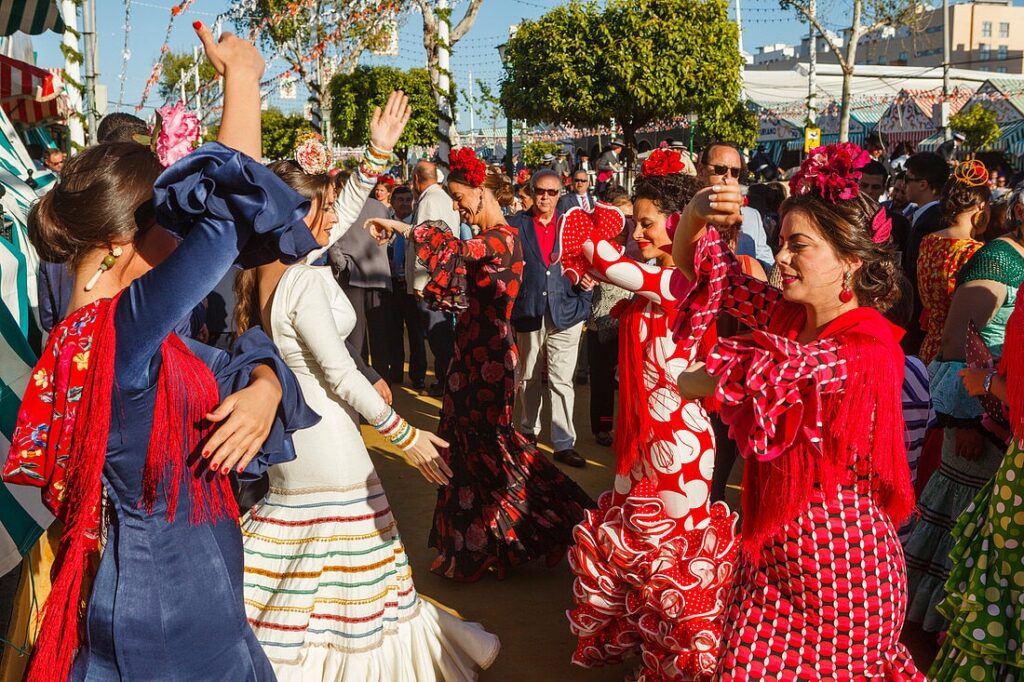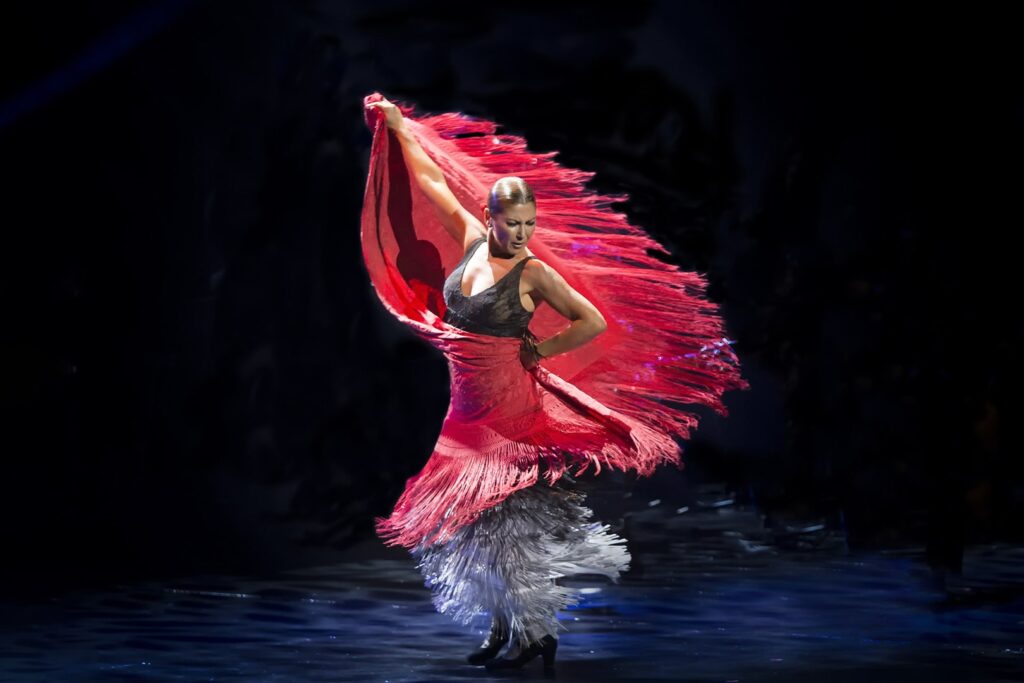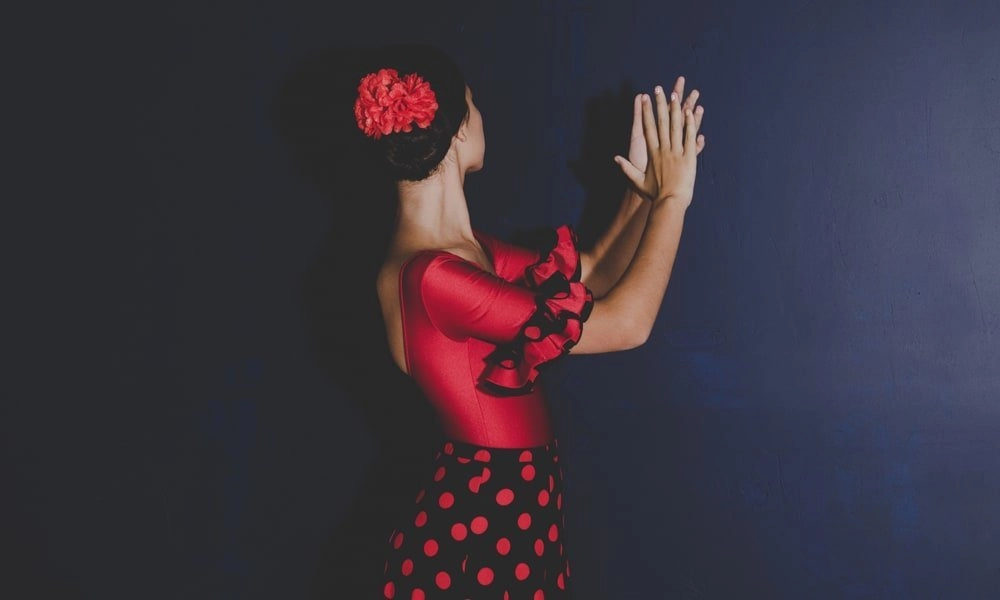Top 15 Traditional Spanish Dances & Their History (Updated 2023)

Spain, with its vibrant culture and wealthy records, boasts a treasure trove of traditional dances that mirror the country’s various areas and impacts. In this weblog post, we’re going to delve into the captivating world of the ‘Top 15 Traditional Spanish Dances,’ exploring their origins, particular characteristics, and the cultural tapestry they make. Get equipped to immerse yourself inside the rhythmic and expressive artistry that defines Spanish dance!
History of Spanish Dance:
The history of Spanish dance is a fascinating journey through centuries of cultural evolution, reflecting the diverse effects that have shaped this vibrant and expressive art form. Rooted in a fusion of Roma, Moorish, and indigenous Iberian cultures, the origins of Spanish dance can be traced back to the numerous regions that make up the Iberian Peninsula. Flamenco, arguably the most iconic Spanish dance, emerged within the Andalusian vicinity, capturing the soulful essence of the Spanish human beings with its complicated footwork, rhythmic hand claps, and emotional storytelling. Over time, Spanish dance evolved, incorporating elements from Gypsy, Arabic, and Jewish traditions, growing a tapestry of movements that reflect the country’s wealthy history.
The impact of regional versions is obvious in dances like Sevillanas from Seville, Jota from Aragon, and Sardana from Catalonia, each with its unique steps, costumes, and cultural importance. The historical interaction among different cultures and groups has not given upward push to standard dances however has additionally enriched the narrative of Spanish dance, making it a dynamic and ever-evolving expression of identification, emotion, and birthday celebration. Today, Spanish dance stands as a testimony to the enduring cultural historical past of Spain, fascinating audiences globally with its passion, rhythm, and timeless splendor.
Let’s dive into the top 15 conventional Spanish Dances and their records:
Flamenco: The Soul of Spain:
Flamenco, born in Andalusia, is a soul-stirring dance that weaves a story of passion and emotion. Infused with intricate footwork, rhythmic hand claps, and severe expressions, Flamenco is a charming combo of Roma, Moorish, and Spanish cultures. Its evolution has given rise to diverse local patterns, each leaving an indelible mark in this iconic Spanish artwork form.
Sevillanas: The Dance of Festivals:
Originating in Seville, Sevillanas is synonymous with Spanish festivities. This vibrant dance, frequently related to Flamenco, boasts problematic steps and styles that embody the celebratory spirit of conventional Spanish fairs. A cultural emblem, Sevillanas enchants with its energetic movements and rhythmic grace.
Paso Doble: The Dance of the Bullfight:
Inspired with the aid of the drama of bullfighting, Paso Doble is a theatrical dance that mirrors the actions of a bullfight. With choreography and tune evoking the depth of the arena, this dance form captures the essence of Spanish bravery and spectacle. Paso Doble stands as a symbolic tribute to the cultural importance of bullfighting in Spain.
Jota: The Dance of Joy:
Celebrating joy and enthusiasm, Jota is an active Spanish dance with active footwork. Distinguished by way of regional versions throughout Spain, Jota is a spirited expression of happiness in the course of galas and social gatherings. Its infectious enthusiasm and traditional costumes make Jota a loved dance shape, embodying the vibrant essence of the Spanish lifestyle.
Sardana: A Catalan Circle Dance:
Hailing from Catalonia, Sardana is a circle dance that symbolizes unity and community. Dancers join arms, shifting gracefully to the track in a symbolic display of togetherness. With its roots deeply embedded in Catalan traditions, Sardana fosters an experience of collective identity, reflecting the cultural diversity within Spain.
Fandango: Expressing Passion through Dance:
The Fandango, a dance of passion and improvisation, boasts a rich history across various Spanish regions. Characterized by using active and expressive movements, the Fandango embodies the fervent emotions that define Spanish dance. Its rhythmic allure and dynamic choreography make it a testimony to the deep connection between emotion and sentiment.
Bolero: Slow and Sensual Elegance:
Rooted in both Spanish and Cuban traditions, Bolero is characterized by using slow and graceful actions. An embodiment of sensual beauty, Bolero has left a long-lasting mark on Spanish dance, influencing diverse modern-day bureaucracy. Its timeless appeal lies inside the difficult choreography that beautifully captures the essence of romance and class.
Chotis: The Spanish Polka:
Chotis, an upbeat and energetic dance, symbolizes celebration in Spain. With versions across areas, Chotis brings an infectious pleasure to social gatherings. Its lively pace and lively actions make it a popular desire for festive events, developing an ecosystem of revelry and communal satisfaction.
Zarzuela: The Spanish Operatic Dance:
Zarzuela, a unique fusion of dance and tune, takes a center degree in Spanish operatic productions. With historic roots and thematic explorations deeply tied to Spanish culture, Zarzuela gives a rich inventive experience. This operatic dance shape stands as a testament to the long-lasting synergy between storytelling, track, and movement.
Malagueña: Flamenco’s Seductive Cousin:
Closely associated with Flamenco, Malagueña is a dance known for its seductive and graceful moves. Influenced by diverse cultural elements, Malagueña has carved its area of interest in modern-day Spanish dance, captivating audiences with its enthralling attraction. The dance’s sensuality and expressive flair pay homage to the intricate storytelling that defines Spanish dance traditions.
Alboreá: Gypsy Passion Unleashed:
Rooted in the Gypsy subculture, Alboreá is a passionate and lively dance, frequently followed by conventional music and apparel. This captivating dance shape performs a vital position in Gypsy celebrations and rituals, reflecting the deep connection between dance and cultural expression. With its fiery power and emotional depth, Alboreá stands as a testimony to the profound impact of the Gypsy way of life on Spanish dance.
Muñeira: Celtic Roots in Spanish Dance:
With Celtic origins, Muñeira injects an active and lively spirit into Spanish dance. Characterized through upbeat footwork and a vibrant musical backdrop, Muñeira showcases regional variations that highlight the cultural variety within Spain. This dance, with its infectious strength, celebrates the fusion of Celtic effects with the different Spanish dance subcultures.
Caracol: The Spiraling Dance:
Caracol, proposing a distinctive spiral pattern, holds symbolic significance in Spanish folklore. This fascinating dance form makes use of complex moves to tell stories and produce emotions. Rooted in tradition, Caracol remains a cherished part of Spanish dance, its spiraling choreography serving as a visible narrative that reflects the deep cultural history of Spain.
Farruca: The Intense Flamenco Style:
Farruca is an effective and intense Flamenco fashion characterized with the aid of complex footwork and a strong, upright posture. Originating from the Asturias area, Farruca sticks out for its dramatic and masculine elements. Dancers show off their technical prowess and emotional depth, making Farruca a fascinating and iconic Spanish dance that needs both talent and passion. Explore the history and one-of-a-kind features of Farruca, a testimony to the enduring charm of Flamenco in Spanish dance traditions.
Zambra: The Dance of the Gypsies:
Zambra, deeply rooted in Gypsy culture, is a passionate and rhythmic dance that originated in the caves of Granada. Characterized by extreme footwork and expressive movements, Zambra frequently functions with tricky hand and arm gestures. This dance is followed with the aid of active tune, developing a fascinating ecosystem that displays the vibrant spirit of Gypsy traditions. Zambra has advanced over centuries, but it keeps its effective connection to Spain’s cultural and ancient narrative.
Additional Tips:
- Immerse Yourself in Performances: Attend stay performances or watch terrific videos to enjoy the strength and passion of conventional Spanish dances. Many cities have cultural occasions or devoted venues showcasing Flamenco, Sevillanas, and different iconic dances.
- Take Dance Classes: If you feel inspired, don’t forget to take dance training to study the fundamental steps of traditional Spanish dances. Many dance studios offer beginner instructions, imparting a hands-on experience to recognize the intricacies of these cultural forms.
- Read Widely on Spanish Dance History: Enhance your expertise with the aid of delving into books, articles, and documentaries that delve deeper into the ancient context of Spanish dances. This will offer a broader perspective on the cultural, social, and creative factors of those dances.
- Visit Spain During Festivals: Plan your go-to to Spain in the course of conventional festivals where those dances are prominently featured. Experiencing the dances of their cultural context, accompanied by live tunes and vibrant celebrations, provides a unique measurement of your expertise.
- Connect with Local Communities: Engage with nearby communities or dance fans who have a deep know-how of Spanish dance. Their insights can provide treasured views, stories, and personal stories that cross beyond what you might locate in textbooks.
Conclusion:
In conclusion, the tapestry of traditional Spanish dances weaves a narrative that transcends centuries, reflecting the rich history, cultural diversity, and unyielding passion of the Spanish humans. From the soulful Flamenco, with its roots deeply embedded in Andalusia, to the active Jota of Aragon and the symbolic Sardana of Catalonia, every dance form tells a unique tale, keeping the essence of Spain’s local traditions. The evolution of Spanish dance, motivated using Gypsy, Arabic, and Jewish cultures, has created a complicated mosaic of actions that commemorate the collective spirit of the state. As those dances continue to enchant worldwide audiences, they serve as a testament to Spain’s enduring cultural legacy, fostering a deep connection between the beyond and the existing. Through the expressive artistry of dance, Spain invites the sector to partake in the rhythmic birthday celebration of its history, traditions, and unwavering zest for existence. ¡Olé!
FAQs:
Q1: What is the significance of traditional Spanish dances?
Ans: Traditional Spanish dances keep gigantic cultural significance as they replicate the rich records, regional variety, and passionate spirit of the Spanish people. These dances function as a way of preserving and expressing the cultural identity of different areas within Spain, contributing to the state’s vibrant cultural tapestry.
Q2: Are traditional Spanish dances best carried out all through galas?
Ans: While many traditional Spanish dances are associated with galas, they may now not be limited to unique events. Flamenco, for example, is finished year-round in diverse settings, from intimate venues to grand theaters. The frequency of performances can also vary with the aid of area and the precise dance shape.
Q3: Can all and sundry research conventional Spanish dances?
Ans: Yes, anyone can research conventional Spanish dances! Many dance studios and cultural centers provide classes for beginners. While a few dances can also require greater technical ability and training, others, like Sevillanas or Jota, are accessible to people with little or no dance level.
Q4: How have conventional Spanish dances developed?
Ans: Traditional Spanish dances have evolved through a dynamic process of cultural change, encouraged by ancient events, migration, and societal changes. The dances have absorbed factors from diverse cultures, resulting in diverse regional patterns. While maintaining their authenticity, those dances preserve to adapt and resonate with modern-day audiences.
Q5: What is the function of track in conventional Spanish dances?
Ans: Music performs a vital position in traditional Spanish dances, setting the rhythm and tone for the movements. Live musical accompaniment, regularly featuring guitar, percussion, and vocals, complements the emotional impact of the dances. The synergy between dance and music is indispensable to the general artistic expression of these traditions.
READ MORE: Champeta Dance Form from Colombia: A New Way to Dance








